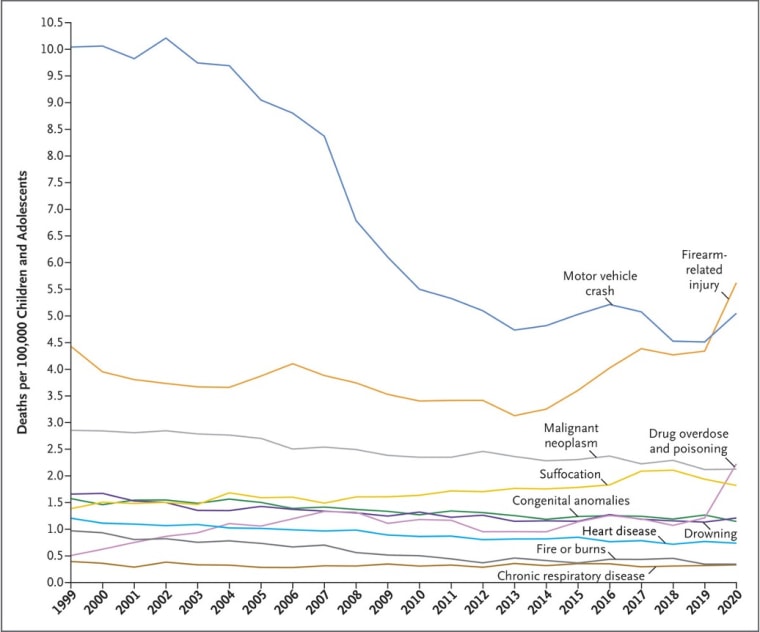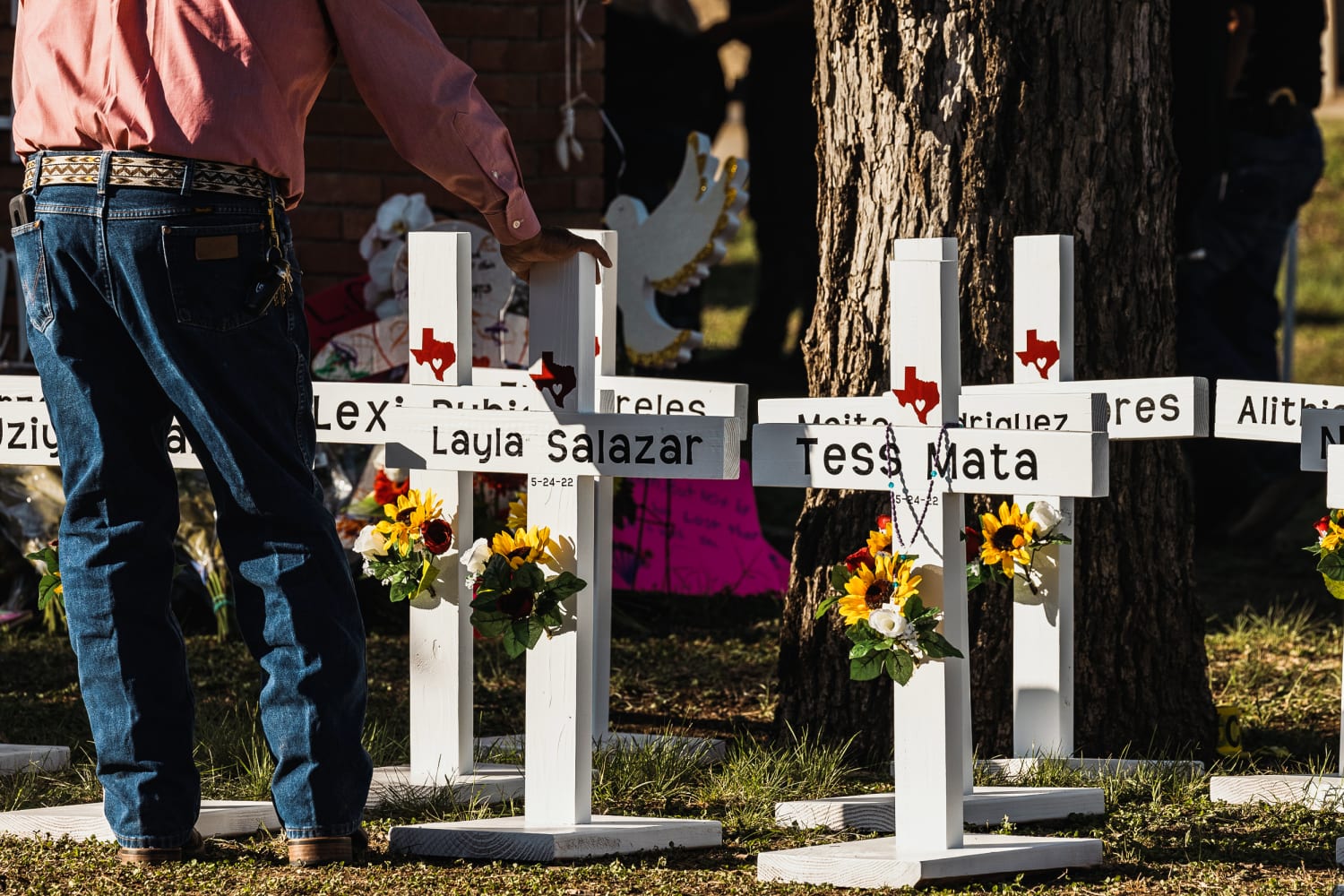Dr. Bindi Naik-Mathuria, a pediatric surgeon at Baylor College of Medicine in Houston, knows what assault rifles can do to a child’s body.
The damage, she said, is often insurmountable.
“It’s not just the hole you see on the outside. It’s a huge blast effect,” Naik-Mathuria said. “You see completely shredded organs. Vessels are completely disrupted. There’s no way to salvage them.”
That’s why Naik-Mathuria is full-throatedly proclaiming that the issue of gun violence is “very much our lane.”
“We have our hands inside these people, these children, trying to save them,” she said. “How can anyone tell us that it’s not our problem?”
She’s not alone. The hashtag #ThisIsOurLane took off in 2018 in the wake of two mass shootings: one at a California bar where 12 people were killed, and another at a Pittsburgh synagogue in which 11 people died. It was resurfaced after the horrific mass shooting at Robb Elementary School in Uvalde, Texas, where a gunman slaughtered 19 children and two teachers.
The social media campaign started in 2018 after the National Rifle Association — reacting to several reports on gun violence published in the journal from the American College of Physicians — tweeted “someone should tell self-important anti-gun doctors to stay in their lane.”
Enraged over Tuesday’s events, medical professionals have reignited #ThisIsOurLane, insisting that gun violence is an urgent pediatric public health emergency.
“People will say to me, you need to stay out of politics. Just be a doctor, just be a pediatrician,” said Dr. Mark Kline, the physician-in-chief at Children’s Hospital New Orleans, referring to those on social media, as well as fellow pediatricians. “This is a case of children dying preventable deaths, and that’s our lane, as pediatricians. We are duty bound to prevent children from dying unnecessarily.”
The Ulvade tragedy is hard enough to grasp, but it’s only a small fraction of the children who are killed by guns in the U.S. each year. Recent research found that firearms surpassed car accidents as the leading cause of death among children and teens in the United States in 2020.
Researchers at the University of Michigan reported in April that more than 4,300 children and teenagers died as a result of guns in 2020. The second-leading cause of death — motor vehicle accidents — resulted in about 3,900 pediatric fatalities that year. The report, using data from the Centers for Disease Control and Prevention, was published in the New England Journal of Medicine.

“We’ve already treated more children with bullet wounds this year than any other year,” said Dr. Chethan Sathya, a pediatric trauma surgeon and the director of the Center for Gun Violence Prevention at Northwell Health in New York City.
Sathya said he and his colleagues have noted a “big spike in gun violence compared to prior years.”
“That’s of course going to directly be felt and seen by front-line workers at the hospitals,” he said.
“We’re not talking about taking away the Second Amendment,” Sathya said. “We’re talking about improving firearm safety and making our communities safer.”
Dr. Sue Bornstein, chair of the board of regents of the American College of Physicians, is a gun owner herself.
“What we promote is safety prevention — things like safe storage, keeping firearms away from children and certainly closing background check loopholes,” she said.
Naik-Mathuria, of Baylor College of Medicine, said that she started texting her colleagues in San Antonio, the closest major city to Uvalde, as soon as she heard about the shooting Tuesday.
The trauma surgeons there had prepared for an influx of children wounded by gunfire. But they never had a chance to try to save them; their wounds from the assault weapon used in the mass shooting were too great.
“They were waiting for these kids who never came.”
Follow NBC HEALTH on Twitter & Facebook.
Source: | This article originally belongs to Nbcnews.com










